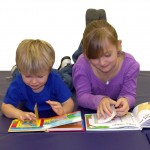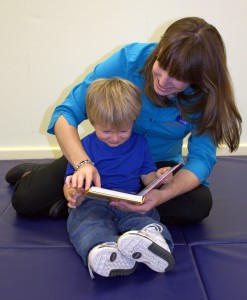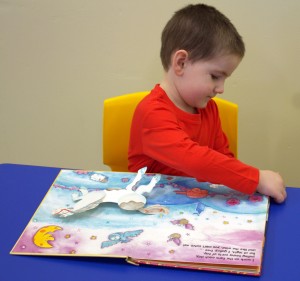So why are stories so important for kids learning? The ability to retell stories ties in closely with the ability to write well later on. It also relates to a child’s reading and comprehension skills. Fluent reading relies on predicting skills so the more familiar a child is with the language and structure of stories the quicker and easier a child will be able to read and understand written stories.
Listening to stories links together spoken and written language. Speech and writing have different structures and rules. Hearing stories read helps children learn these differences. Retelling stories allows children to practice forming written language structures even before they can write.
Some of the differences between written and spoken language are:
-
written language uses more complete sentences
-
written language provides more detail and context, because the reader cannot see what the writer is experiencing
-
written language needs referencing of information such as if a person is talking or thinking “he said” or “thought the girl” is used to reference the speech or thoughts
-
written language has an overall structure, which changes depending on the type of text such as story, recount, argument etc.
The structure of stories includes:
-
A beginning with when, who and where information e.g. One day (when) a boy (who) went to the beach (where)
-
A middle section which contains one or more problems which the characters try to solve. The story is about the actions of the characters trying to solve the problem and usually includes the feelings of the characters too.
-
An ending which solves the problem and often includes how the characters are feeling when it is solved.
-
Stories are usually told in past tense. Conjunctions (joining words) provide important information about how the different parts of the story tie together in time (next, suddenly, later, before that) and cause effect (because, even though, however).

Stories for different ages: Children develop their ability to understand and tell stories over time and with experience. Here are the types of stories suitable for different age groups:
Isolated Description: Simple stories for two year olds
The story has related statements about particular objects, characters or actions. For example, a series of ‘I like’ sentences. The statements are not related by time or consequences.
Action Sequence: Action stories for preschoolers
The story tells a series of things that happen over time. For example a trip to the zoo looking at different animals. There are no cause-effect relationships between the parts of the story.
Reactive Sequence: Cause and effect stories for children beginning school
Things happen in sequence and one thing causes another to happen. The story includes feelings and reactions from the characters.
Narratives: True “stories” for school aged children
The story centres around a problem and the characters reactions, plans and attempts to solve the problem. There may be a series of attempts and a series of problems that occur and are solved at the end.
To develop your child’s ability to tell stories:
Firstly choose a picture book with clear pictures that represent the story.
Next take time to talk to your child about what the story involves:
-
Who are the characters?
-
What is happening?
-
Why is it happening?
-
How are the characters feeling?
Then tell the story to your child. You may choose to read the words or tell your own story. Try to include the story parts listed above.
Next encourage your child to tell the story from the pictures.
-
Encourage them to begin with a beginning structure.
-
If they use present tense repeat this back as past tense e.g. “the boy is eating the apple” becomes “the boy ate the apple”.
-
Fill in parts of the story using joining words to link actions if your child does not. Use “and then” to begin and use more complex joining words (so, but because, later, suddenly) as your child progresses.
-
Help them to reference direct speech if they forget. e.g.: “said the boy”
-
Encourage your child to use a beginning and ending structure.
You can download some more information as well as printable story plannners and more from our website.
There are also loads of storytelling ideas and resources on our Pinterest page.

Ideas for practising storytelling:
Make it a part of your routine to read to your child each night and get them to tell one story to you from the pictures of a favourite book.
Tell someone else. Read the story to your child then ask them to tell it to someone else, a family member, younger sibling or even a teddy
Play schools. Children love to line up dolls and teddies, sit on a chair, hold a book and be the teacher, telling the story.
Sequence stories. Scan and print some pictures from familiar stories, or buy some cheap or second fairytale books and cut up the pictures. Help your child to put the pictures in order and tell the story.
Make your own stories. Take some photos on a family outing, print and slip them into a mini photo album and help your child make up a story to go with the pictures. Share your stories with family and friends.
Be the narrator. Try making a slide show on the computer or ipad using your own photos and recording your child’s voice telling the story.
Act it out. Use dolls, toy figurines, or plastic animals to act out a familiar story. Tell the story as your child acts it out, remembering to use the story structures discussed, then your child can tell as you act it out. Try using dress ups and letting your child be the character.

To help parents and teachers support children to develop literacy skills Talking Matters has developed a starting school pack which can be downloaded for free from the front page of our website.
There is also a large amount of information about language and literacy in the download section of the website.
We hope you enjoy sharing stories with your children
Related Blog Posts
If you liked this post you may also like:
Developing writing while on school holidays
Using OPERATION To Grow
More barrier games
Dinnertime - Supporting Your Child's Development



